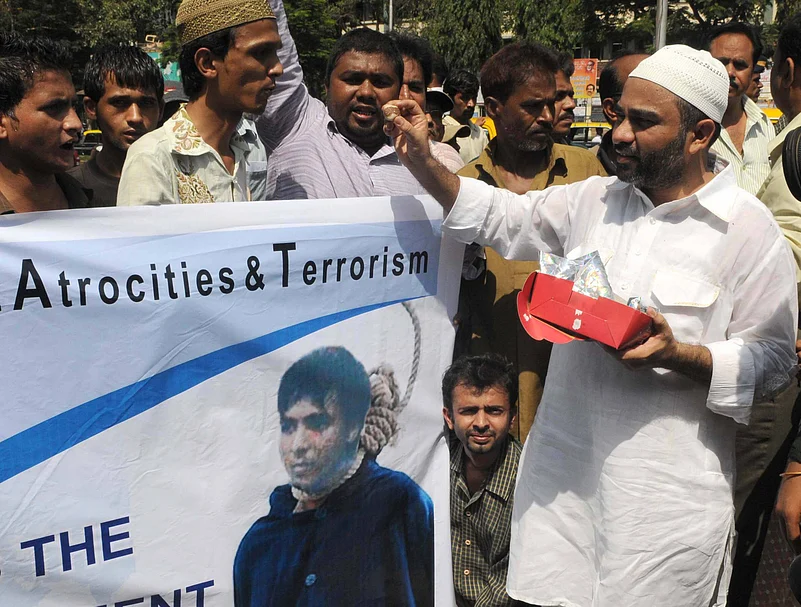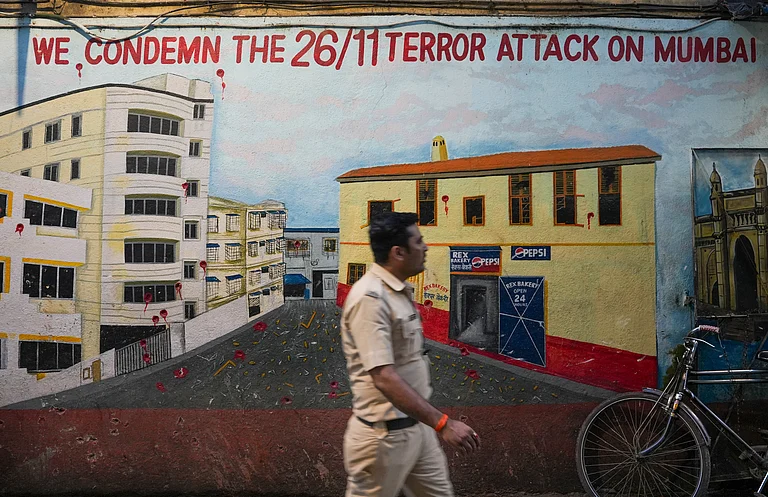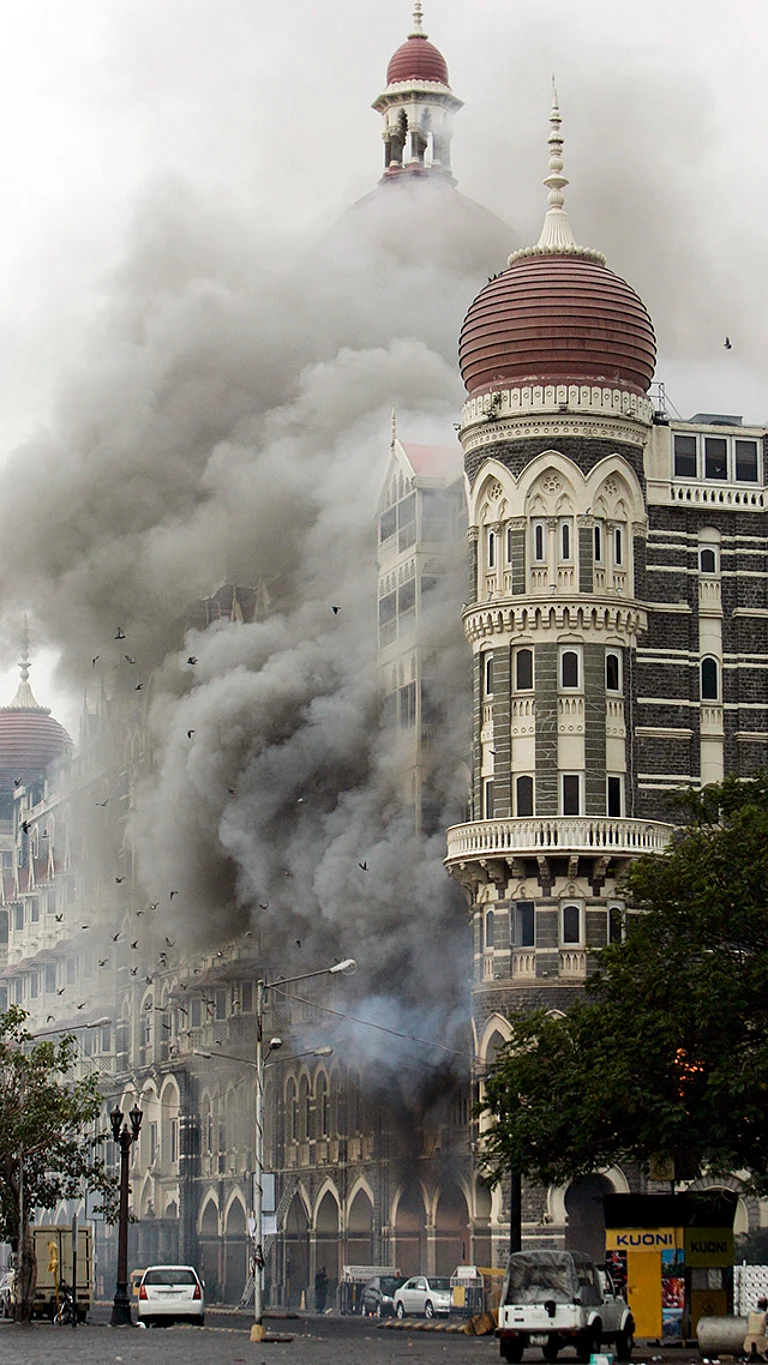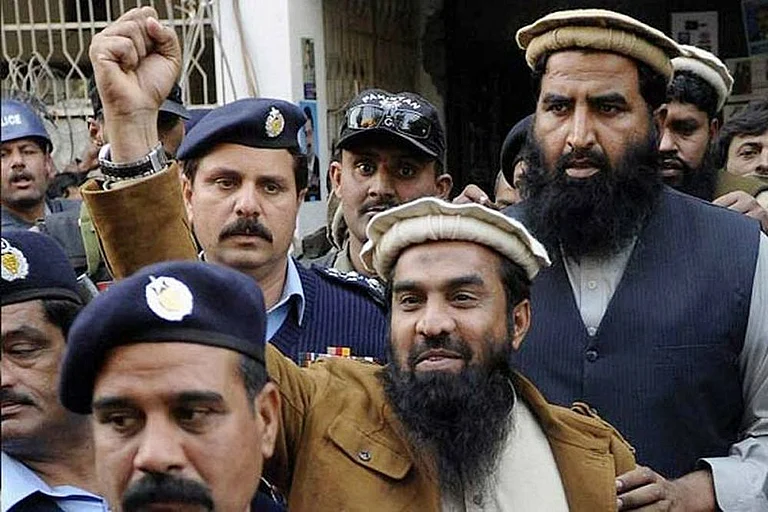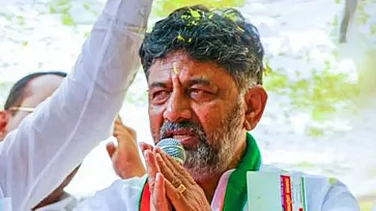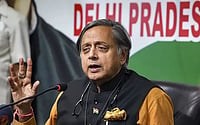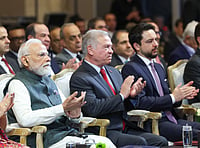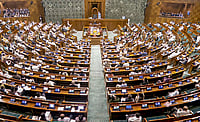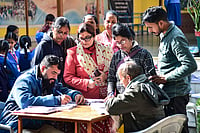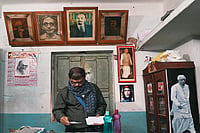
The date, forever etched in Indian history, marks one of the worst terrorist attacks to strike the nation.
During the 26/11 attacks, 10 Lashkar-e-Taiba (LeT) militants entered Mumbai through the sea and struck multiple prominent locations.
A total of 166 people were killed while over 300 were injured. Nine of the militants were eliminated by security forces.
Another ordinary night on November 26, 2008, in Mumbai was shattered by the sound of gunfire and screams. The date, forever etched in Indian history, marks one of the worst terrorist attacks to strike the nation. During the 26/11 attacks, 10 Lashkar-e-Taiba (LeT) militants entered Mumbai through the sea and struck multiple prominent locations including Taj Mahal Palace hotel, Oberoi-Trident, Chhatrapati Shivaji Maharaj Terminus (CSMT), Nariman (Chabad) House and Leopold Cafe.
A total of 166 people were killed while over 300 were injured. Nine of the militants were eliminated by security forces. The lone survivor, Mohammed Ajmal Amir Kasab from Pakistan, was arrested, handed the death penalty in 2010, and executed two years later.
26/11 Attacks Timeline
November 23, 2008
Ten terrorists leave Karachi via sea and hijack an Indian fishing trawler, Kuber, near the Indian coastline. They kill four crew members and coerce the captain into steering the vessel toward Mumbai.
November 26, 2008
After reaching roughly seven kilometers offshore, they kill the captain and board three inflatable speedboats. Six land at Cuffe Parade’s Machchimar Nagar, while the others disembark near Badhwar Park.
Leopold Cafe:
Two terrorists attack the cafe, killing 10 people and injuring many more. Bombs are also planted in two taxis, killing 5 and injuring 15.
Nariman (Chabad) House:
An explosion draws attention to the building as terrorists inside begin firing from the windows.
9:21 PM — CSMT Attack
Terrorists Ajmal Kasab and Ismail Khan open fire indiscriminately at Chhatrapati Shivaji Maharaj Terminus. The massacre lasts nearly an hour and a half, killing 58 people and injuring over 100.
Around 9:30 PM — Taj & Oberoi Attacks
Four terrorists storm the Taj Mahal Palace hotel.
Two enter through a side entrance and attack guests near the pool.
Another two enter through the main lobby, hurling grenades and firing at close range.
They subsequently target guests at the Oberoi-Trident hotel.
Around 10:30 PM — Cama Hospital & Aftermath
Kasab and Ismail move toward Cama Hospital, killing six police officials including ATS Chief Hemant Karkare, Vijay Salaskar, and Ashok Kamte. They seize a police vehicle but are intercepted shortly afterward. Ismail Khan is killed; Kasab is captured alive.
November 27, 2008
Security forces surround the Taj, Oberoi-Trident, and Nariman House.
6:30 AM
NSG commandos arrive from Delhi and begin coordinated operations and evacuations throughout the day.
November 28, 2008
Multiple hostages are rescued. All terrorists at Nariman House and the Oberoi are neutralised.
November 29, 2008
The final phase concludes at the Taj between 6 AM and 9 AM, ending the nearly 60-hour siege. Around 31 people were killed inside the hotel alone.
In its aftermath, India strengthened national security and established permanent NSG hubs in major cities to ensure faster emergency response. Following widespread criticism of the government’s handling of the crisis, Union Home Minister Shivraj Patil and Maharashtra Chief Minister Vilasrao Deshmukh stepped down.
Kasab’s Trial: A Timeline
January 16, 2009
Arthur Road Central Jail in south Mumbai is designated as the venue for Ajmal Kasab’s trial.
February 5, 2009
Kasab’s DNA samples match evidence recovered from the hijacked fishing trawler Kuber.
February 20/21, 2009
Kasab confesses before Magistrate R.V. Sawant-Wagule.
February 25, 2009
A chargesheet against Kasab and two others is filed in the Esplanade Metropolitan Court.
April 15, 2009
The trial in the 26/11 case formally begins.
April 17, 2009
Kasab’s confession is placed before the court; he retracts his statement.
April 20, 2009
The prosecution charges Kasab with 312 counts, covering a wide range of terror and criminal offences.
July 20, 2009
Kasab pleads guilty before Special Judge M.L. Tahaliyani, admitting to his role in the attacks.
December 16, 2009
The prosecution concludes the presentation of its case.
May 6, 2010
Kasab is sentenced to death by the special 26/11 court.
October 18, 2010
Hearing on the confirmation of Kasab’s death sentence begins in the Bombay High Court.
February 21, 2011
The Bombay High Court upholds Kasab’s death sentence.
July 29, 2011
Kasab challenges the verdict in the Supreme Court.
August 29, 2012
The Supreme Court affirms Kasab’s death sentence.
September 16, 2012
From Arthur Road Jail, Kasab submits a mercy petition, which is forwarded to the Maharashtra government.
October 16, 2012
After the Maharashtra government rejects the plea, it is sent to the Union Home Ministry.
October 23, 2012
The Home Ministry rejects the mercy petition.
November 5, 2012
President Pranab Mukherjee rejects Kasab’s final mercy plea.
November 8, 2012
Kasab’s file is forwarded to the Maharashtra government for final action.
November 21, 2012
Ajmal Kasab is executed by hanging at Yerawada Central Jail and buried within the prison premises.






